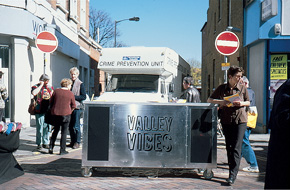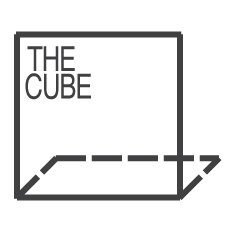
Uncategorised
Jeanne van Heeswijk
“If you really want to contribute to changes in social structures, you need time.” Jeanne van Heeswijk took this ethos to heart in Valley Vibes, her effort to gather the voices of East London’s residents, who in 1998 began witnessing gentrification–or the replacement of local culture for corporate business–in their neighborhood. As part of the project, van Heeswijk, along with curator Amy Plant, built a “Vibe Detector,” a simple aluminum storage container on wheels that functions as a mobile karaoke machine, radio station, and recording studio, equipped with a professional sound kit and DAT recorder.
At the project’s launch, van Heeswijk enlisted members of the architecture and urban-planning research group CHORA to occupy sidewalks (à la street food vendors) and ask residents to use the available equipment to record their stories, music, performances, or any other signifier of local culture that countered the regeneration taking place in the neighborhood. The Vibe Detector traveled to private parties, the local hairdresser’s salon, shops, nightclubs, poetry readings, school events, municipal meetings, and festivals–wherever residents would gather to discuss issues important to them. CHORA still operates the Vibe Detector by offering the equipment for use free of charge, as well as technical assistance and marketing advice.
Van Heeswijk is the 2011 recipient of the Leonore Annenberg Prize for Art and Social Change. Since 1993, she has created public art that mediates relationships among neighborhood residents by initiating different modes of communication around pressing issues. For one of her first projects, she organized a joint exhibition between Amsterdam’s Buers van Berlage art museum and the Red Cross that addressed notions of human dignity in an age of violence. In 2008, she revitalized the Afrikaander market in South Rotterdam by bringing artists, vendors, and consumers together to rebuild stalls, rethink the selection of wares for sale, and create a new economy within this struggling neighborhood.
[ About Living as Form | Curator Statement | About the artists ]


